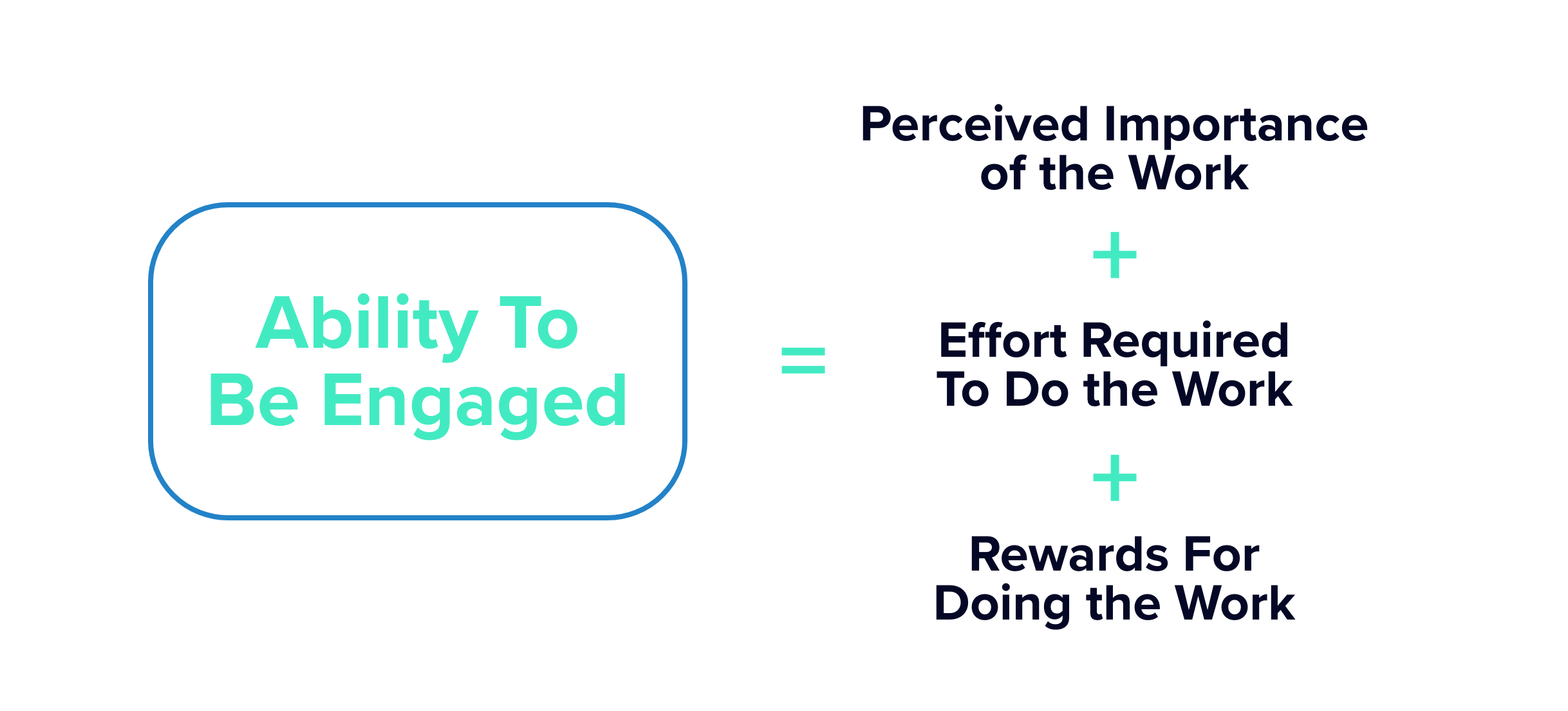Building on the first article in our two-part series, "Decoding Employee Needs for Resources and Support with Listening," this piece will explore the critical interplay between resources, support, and employee engagement. As emphasized in our previous discussion, effective employee listening not only helps translate employee voices into data-driven insights. It can also serve as a compass guiding the organization toward continual improvement and success.
What Employees Want: Fulfillment and Productivity
In an ideal work environment, employees join an organization because they want to contribute to the company's goals and objectives, and they want to do their jobs well. The motivation for performing their roles with dedication and excellence comes from an inherent desire to invest their time and talents wisely and contribute to outcomes that matter, both to them and the organization.

This sense of fulfillment and productivity forms a large part of employee engagement, which can be viewed as a balance between the perceived importance of the work, the ease with which the work can be performed, and the rewards gained from doing the work. This equation — Ability to be Engaged = Perceived Importance of the Work + Effort Required to Do the Work + Rewards for Doing the Work — encapsulates the ideal scenario where all these factors are harmoniously balanced.
An Unbalanced Employee Experience
Research shows a clear link between high levels of employee engagement and increased productivity, profitability, and lower turnover rates. However, maintaining this equilibrium is a constant struggle for organizations, especially when one or more of these factors starts to tip.
One critical piece to the balancing act is navigating the availability (or scarcity) of resources and support. When employees are deprived of necessary tools, guidance, or emotional support, it becomes increasingly challenging to perform their duties efficiently. According to research by Gartner, employees who are given the autonomy to choose how they work are 2.5 times more likely to be fully engaged. This reflects the importance of providing the right resources and fostering a supportive environment that enables employees to do their jobs well.
When the scales of this engagement equation tip due to inadequate resources and support, the other two elements are subjected to additional strain. Employees are left grappling with the relevance of their work and the rewards they receive, particularly when their efforts are not sufficiently facilitated or recognized. They may begin to question whether they, their expertise, and their contributions are valued by the company and its leadership.
Continued experiences of this nature can lead to mounting frustration and a sense of injustice, which adversely impacts employee morale and engagement levels. When employees consistently feel they're expected to deliver optimal results with sub-optimal resources, the repercussions can be severe. It can lead to the disheartening perception that their ability to contribute is not recognized, triggering disengagement and potentially attrition. As described in Perceptyx’s research on “Quiet Quitting,” they may also begin “acting their wage,” meaning they’ll provide an amount of effort consistent with what they’re being paid. When given the bare minimum, employees are more likely to return the bare minimum.
The Power of Dialogue: Getting The Right Tools, Right Now
When employees lack the tools needed to do their jobs, Perceptyx research shows there’s an increase in the likelihood of disengagement and a similar increase in the likelihood of burnout. To preempt such outcomes, proactive listening is crucial. Perceptyx’s Dialogue product delivers a rapid and transparent crowdsourcing process for understanding employees’ needs. Dialogue can rapidly and reliably help organizations determine if what employees need pertains to tangible resources, additional support, or the freedom to make decisions autonomously. Dialogue gives power and voice to employees with transparent feedback processes, including self-prioritized responses, and delivers leaders a direct line to what is really needed. By harnessing the power of Dialogue, organizations can ensure that they're attuned to their employees' needs, fostering a healthier, safer, and more engaged work environment.
An international law firm with a 5,000-person workforce serves as a testament to the efficacy of such an approach. When the pandemic forced closures of the firm’s office spaces and saw their employees transition to remote work, the firm used Dialogue to initiate a proactive listening strategy. While leadership initially expected to field questions about healthcare, benefits, and job security in the wake of the crisis, they found that the employees were grappling with more immediate, practical concerns.
One such practical issue that surfaced was the struggle with makeshift workstations at home, particularly suboptimal seating arrangements. Responding to these employee insights, the law firm began allowing employees to check out their ergonomically designed office chairs for use at home while ensuring safe social distancing measures were observed in the process.
Although this response might seem straightforward, it addressed a significant workplace issue. Ergonomics is often a neglected aspect, and without the timely collection and analysis of employee feedback, the situation could have resulted in increased discomfort and work-related injuries. By listening and responding to its employees' needs, the firm managed to maintain productivity while enhancing the comfort and well-being of its remote workforce.
Employee Listening Plays a Critical Role
With that in mind, how can your organization take action to ensure the right resources and support are provided? Here are some questions to consider:
- What suggestions for resources and support have emerged from employee survey comments?
- Are there certain groups or individuals who urgently require more resources and support than others?
- What additional information do you need to provide the right resources and support?
- Do you require assistance from higher levels of leadership or other teams to deliver the necessary resources and support? If so, how can you advocate for this?
Maintaining a balanced, productive work environment requires astute attention to the dynamic interplay between resources, support, and employee engagement. It's like a finely-tuned orchestra, where each element must harmonize with the others to create a symphony of success.
Resources fuel productivity, support nurtures resilience, and engagement instills purpose. When these elements synergize, it unlocks the true potential of your workforce, transforming individual employees into a united, high-performing team.
The magic lies in understanding and responding to the unique needs and experiences of your employees. It's not a one-size-fits-all approach. You need to create a strategic listening program, tailored to the distinct nuances of your organization. It's this customized approach that drives deep employee engagement and stellar organizational performance. Remember, your people are your power; tune into their voices and transform your workplace.
Partner with Perceptyx to Empower Your People
Begin your journey toward a more engaged workforce by speaking to a member of our team or taking our free interactive listening maturity assessment. Let us work with you to design a strategic listening program that will not only have a lasting impact on your people but also strengthen your organization's foundation.
